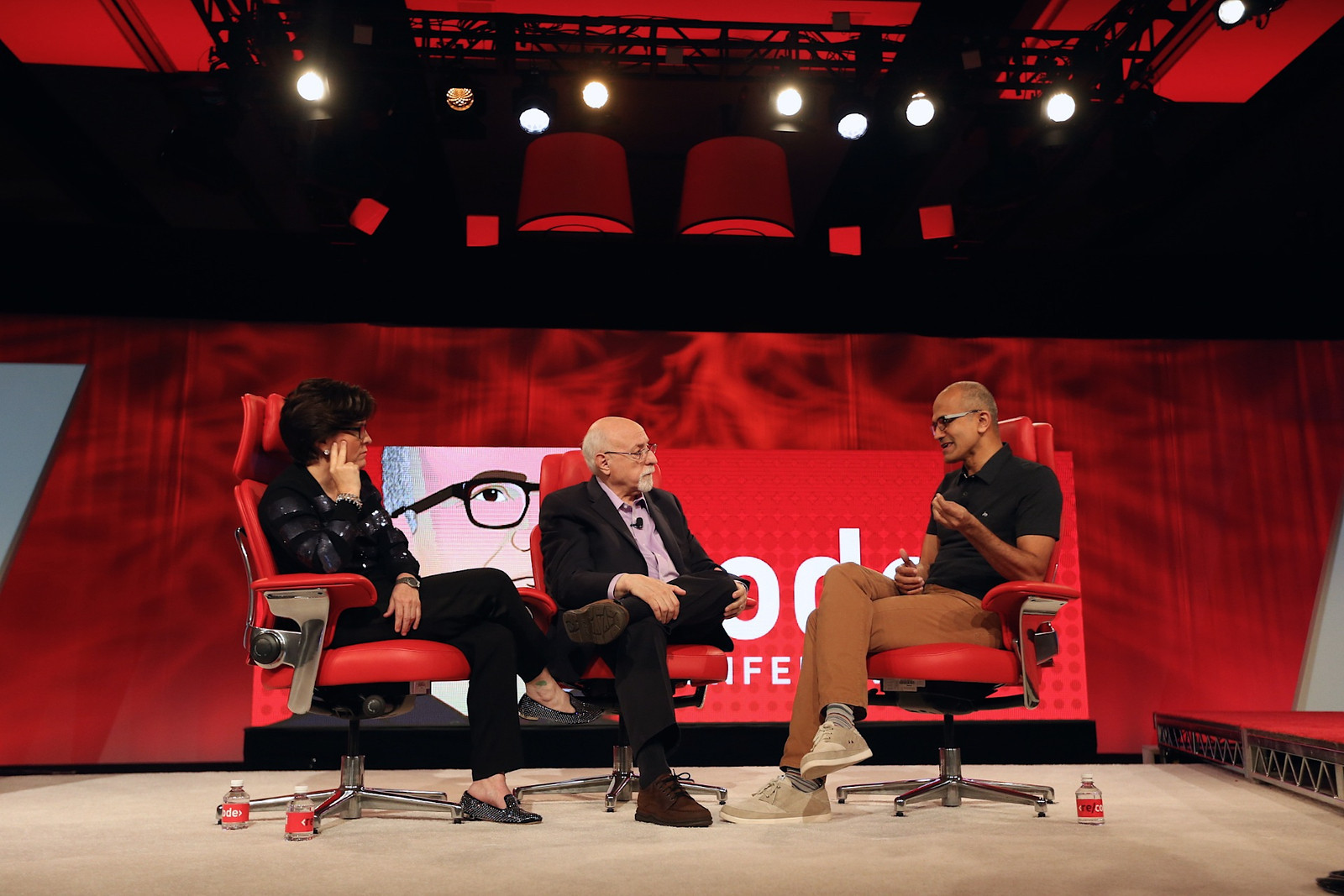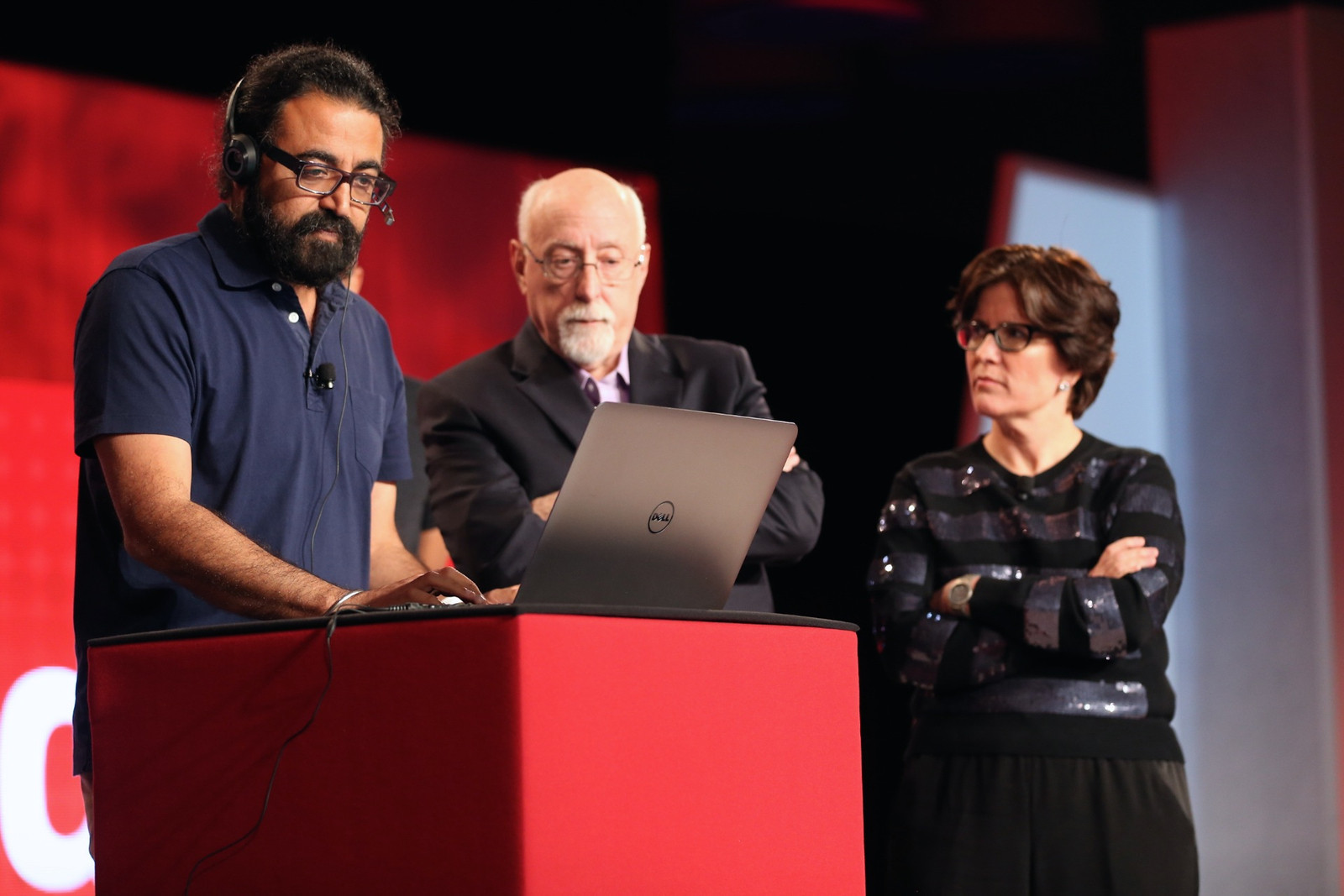It’s been an interesting evening here in Rancho Palos Verdes, Calif. at the inaugural Code Conference (#CodeCon) where @karaswisher and @waltmossberg are engaging Microsoft CEO @satyanadella in a more than hour-long onstage conversation.
During his conversation with Walt and Kara, Satya discussed his views on how we’re evolving to a more personal, more human era of computing, and I had the good fortune to join Satya on stage to demo – for the the first time publicly – an exciting new capability we’re developing for Skype.
| On Tuesday at the inaugural Code Conference in Rancho Palos Verdes, Calif., Microsoft CEO Satya Nadella sat down to talk with Re/code’s Kara Swisher and Walt Mossberg. Photo credit: Asa Mathat – Re/code. |
Imagine in the very near future technology allowing humans to bridge geographic and language boundaries to connect mind to mind and heart to heart in ways never before possible.
For more than a decade, Skype has brought people together to make progress on what matters to them. Today, we have more than 300 million connected users each month, and more than 2 billion minutes of conversation a day as Skype breaks down communications barriers by delivering voice and video across a number of devices, from PCs and tablets, to smartphones and TVs. But language barriers have been a blocker to productivity and human connection; Skype Translator helps us overcome this barrier.
| On Tuesday at the inaugural Code Conference in Rancho Palos Verdes, Calif., Gurdeep Pall, Microsoft corporate vice president of Skype and Lync, demoed the new Skype Translator app while Re/code’s Walt Mossberg and Kara Swisher looked on. Video of the demo will be available on The Official Microsoft Blog shortly. Photo credit: Asa Mathat – Re/code. |
Skype Translator results from decades of work by the industry, years of work by our researchers, and now is being developed jointly by the Skype and Microsoft Translator teams. The demo showed near real-time audio translation from English to German and vice versa, combining Skype voice and IM technologies with Microsoft Translator, and neural network-based speech recognition. Skype Translator is a great example of why Microsoft invests in basic research. We’ve invested in speech recognition, automatic translation and machine learning technologies for more than a decade, and now they’re emerging as important components in this more personal computing era. You can learn more about the research behind this initiative here.
As you saw from my conversation with Diana, it is early days for this technology, but the Star Trek™ vision for a Universal Translator isn’t a galaxy away, and its potential is every bit as exciting as those Star Trek examples. Skype Translator opens up so many possibilities to make meaningful connections in ways you never could before in education, diplomacy, multilingual families and in business.
Skype Translator first will be available as a Windows 8 beta app before the end of 2014. Skype itself is available across a number of devices and computing platforms. If you aren’t already using Skype for voice and video calls, I encourage you to download Skype and create your account.
In our industry, we often talk about pursuing big, bold dreams, and of how we’re limited only by the power of our imaginations. Skype Translator is one of those endeavors, and I look forward to keeping you apprised of our journey to break down another barrier to human productivity and connection.


